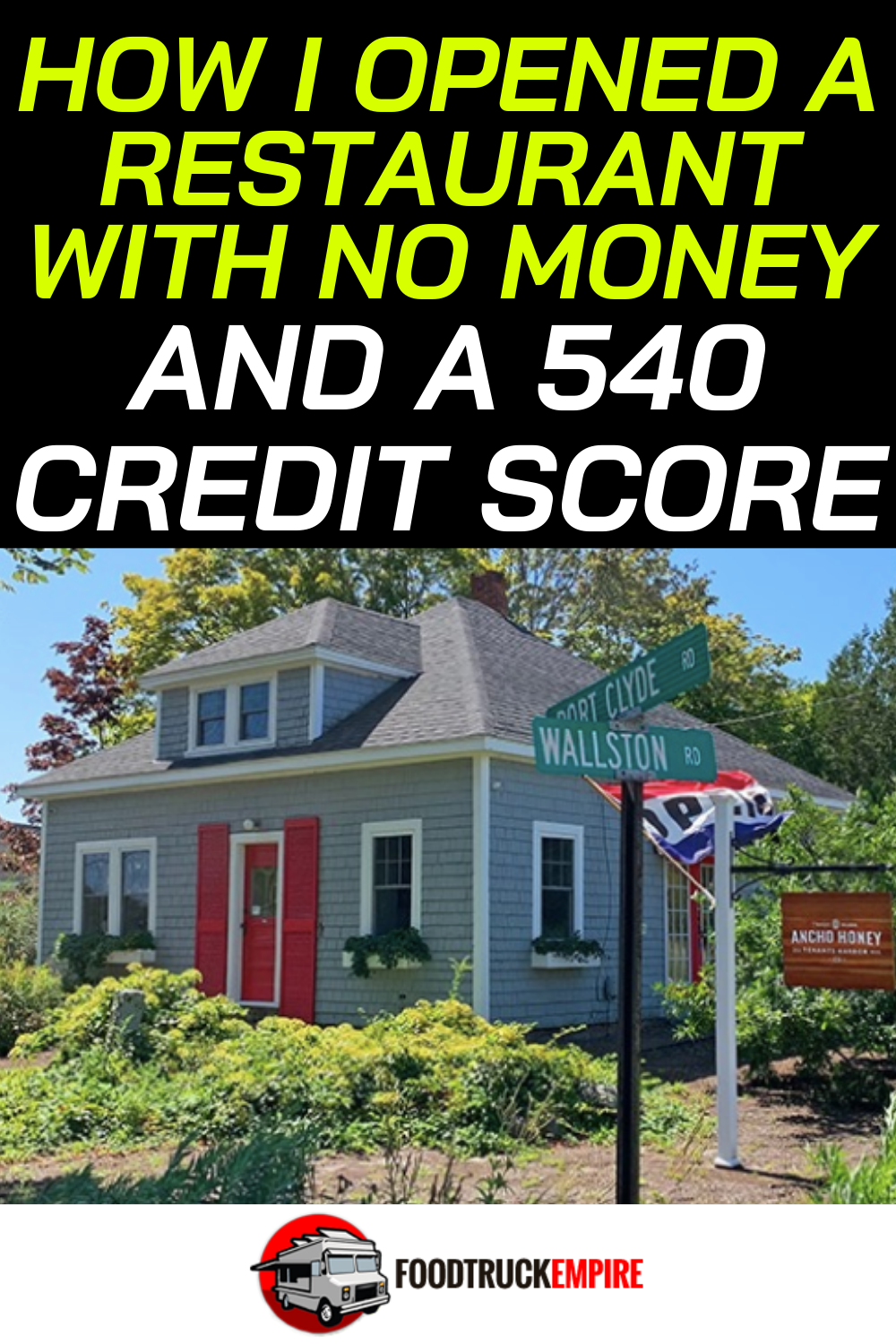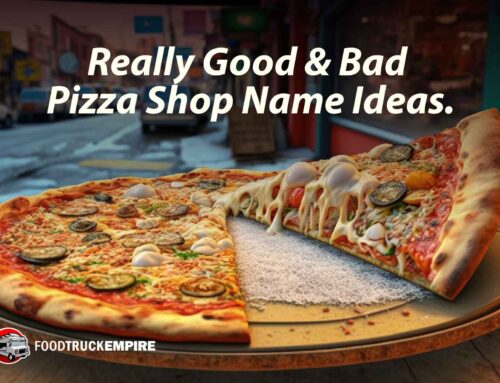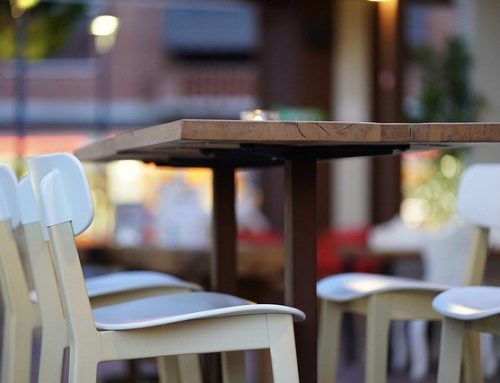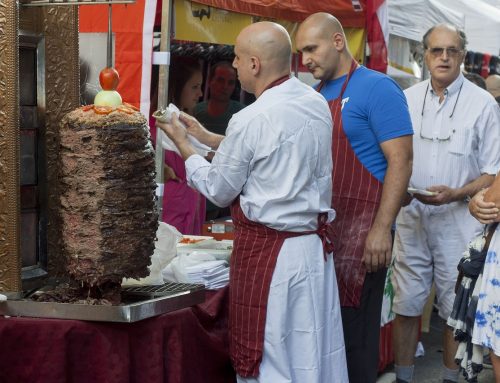Do a quick Google search for “financing a restaurant,” and you’ll find the same advice over and over. Do your research. Write a business plan. Get a loan or find an investor. Some of the more cutting-edge research available out there might even mention crowdfunding as an option, or other alternative funding sources.
But what do you do when you’ve got a concept that you know is a winner, a marketplace hungry for what you have to offer, no cash in the bank, and a credit score so low that you couldn’t qualify for a loan on a loaf of bread, let alone the capital needed to open a restaurant?

There’s no quick fix to the funding problem. But I’m here to tell you that you CAN get your dream off the ground, with next to no cash on hand and no credit needed, while you slowly chip away at fixing your financial profile, all while watching money come in the door each day.
Will starting restaurant without massive savings or shimmering-credit score be easy? Nope! But I’ve proven that some creativity combined with resilience you can make restaurant ownership a reality.
And no, this isn’t all building up to a pitch for you to pay for my webinar. I’m just going to give you the straight dope, both on what worked for me, and how you can improve your financial prospects going forward.
My Background
First, a brief disclosure of my financial profile. I’m a divorced father of two, who prior to opening my restaurant, earned a living as a freelance writer and social media wang.
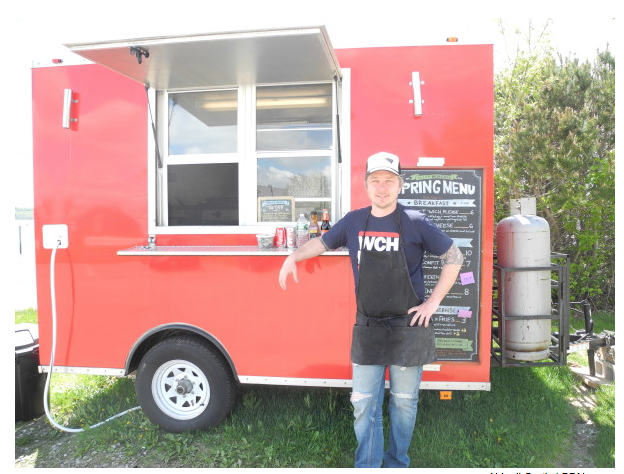
I have no savings, either in a retirement account, or as a general backup plan for living. My next paycheck is never a certainty; I have to hustle day in, and day out, to find new clients and new prospects for my work online.
I don’t own any property, and am upside down on my car payments. Try as I might, my credit score hovers at around 540, thanks to a defaulted student loan and some sloppy accounting in the early 2000s which left me with some IRS tax debt.
In short, I am not a good candidate for a loan, either from a bank, or even from sympathetic friends or family members.
But as any entrepreneur with a fire in his or her belly knows, these kinds of obstacles aren’t enough to dissuade most of us from chasing our dream. For me, I had spent years fantasizing about transitioning my tiny, seasonal food truck into a full-fledged, year round restaurant.
How to Start a Restaurant with No Money and Bad Credit
Here’s how I pulled off starting a restaurant with next to no cash on hand, no maxed out credit cards, no investors, and no bank loans.
Find a space that’s basically turnkey.
This can mean wildly different things to different people; a chef will probably have a much different idea of what “turnkey” means than a realtor.
Look for spaces where another restaurant owner has recently gone out of business, and who may either be including their equipment in a lease or sale, or selling it at desperation-level prices. Don’t worry so much about whether your space is exactly “right” for you, or in line with your aesthetic vision.
Here’s a cool time lapse of us putting up the Ancho Honey sign at the entrance of my restaurant:
Instead, look at the bones of the building. Is there adequate parking? Are there big structural problems? How ready is the kitchen for a health inspection? Is there hot water? Refrigeration equipment, including ideally a walk-in cooler? Sure, there may be weird indoor/outdoor carpeting running through the dining room, and the windows may not have exactly the curtains you had imagined, but these are all problems you can fix yourself, without spending a lot of money.
Some funky tile in the bathroom, you can deal with; a malfunctioning (or nonexistent) exhaust hood or a tainted water supply represents a big expense you’re probably not ready to take on. Look for spaces which are structurally sound, and worry about applying your aesthetic later.
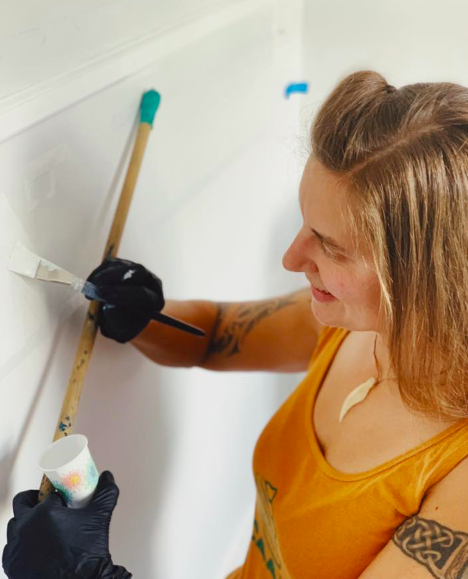
When you find your space, beg, barter and steal to come up with your first month’s rent and security deposit.
My restaurant space has ridiculously low overhead; the total amount I needed to come up with to get the lease signed and the keys handed over was $2600.
Not a lot of money, right? It sure can seem like it if you don’t have any, and if you’ve already tapped out the financial goodwill of your friends and family.
I was lucky to have a well-heeled sister who could help out, provided I sweetened the deal. Instead of just a straight loan, I promised her not just repayment in full within six months, but also 3% of gross sales for the first year of operation.
Related Reading: How I Converted a House into a Fully Licensed Restaurant
This doesn’t end up being a ton of money, but it provides some upside to the person loaning you money, and provided you trust each other implicitly, can all be done on a handshake.
What if you don’t have these kinds of well-wishers in your life? Crowdfunding is obviously an option, and for some, credit cards are another possibility (though it probably makes more sense to save those for emergencies).
Regardless of the route you take to land that initial chunk of money, just get it done, and make getting it paid back the first priority of your new business.
Apply sweat equity to accomplish the minimum tasks needed to get the doors opened.
With your lease signed, the clock is officially ticking. Every minute you’re paying rent on your new space, but not slinging food, is money streaming out of your pocket. So back-burner everything else in your life, make a list of the things you need to accomplish before you can get the doors open, and figure out how much of that work you can do yourself.
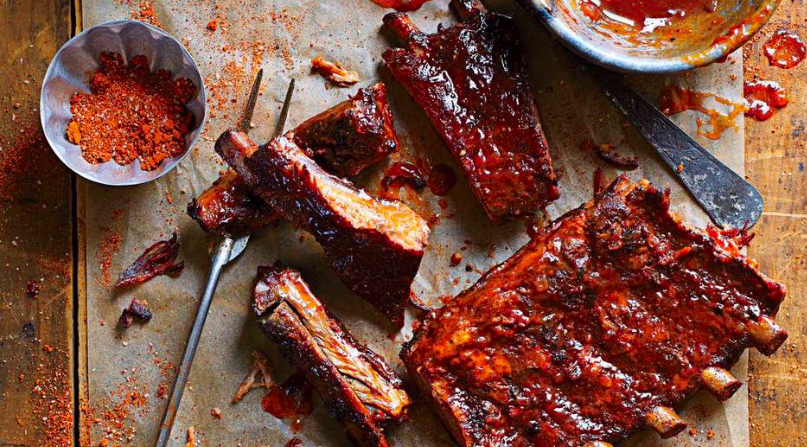
In my case, I didn’t need any plumbing or electrical work (though I could probably call in a favor from a friend, if I needed something quick done). I needed to repaint every surface, buy equipment, get that equipment loaded in, buy initial starting inventory, and get cooking.
The amount of money needed to get that done will vary for everyone, but remember: We’re not building our dream restaurant, we’re just getting to opening day. If you’re lucky, and if you’ve chosen your space carefully, a few coats of paint and a few pieces of equipment should be all you need.
Consider that initial inventory purchase carefully.
One of the greatest pleasures in the life of a cook is to walk into a perfectly appointed dry storage area, where there are cases and cases of every possible ingredient you could ever hope to use, neatly arranged on shelves and waiting to serve your inspiration.
But when you’re opening a restaurant on a tight budget, you don’t get to have that. Not yet. Again, think about what you need for opening day, because as soon as you get to opening day, you have cash coming in the door.
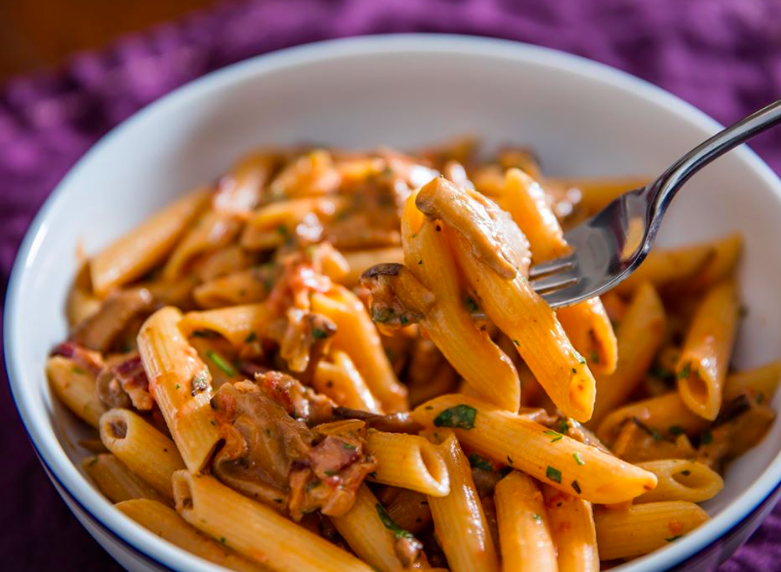
That means you don’t have to have to worry about having your pantry stocked for the apocalypse with backups of your backups. You don’t need to buy 200 dinner plates, a case of molasses, 5 gallons of fish sauce, and five cases of napkins.
How many people are you going to serve that first day? 20? 50? Buy half that number of plates and flatware sets, and plan on washing lots of dishes during any spare moments of downtime.
How many cans of tomatoes do you need to prep your world famous Bolognese sauce, one or two? Then buy one or two. You can get better stocked once there’s cash coming through the door. For now, buy what you need, not what you want.
Design your menu for the kitchen you have, not the kitchen you want.
In a similar philosophy as outlined above, don’t build a menu which you can’t execute until you make new equipment purchases. If you have your heart set on offering a steak frites plate, but don’t have a charbroiler and a deep fryer and a French fry cutter, don’t run out and buy those things (for $500, $700, and $100, respectively) just to make that one dish that you’ve decided is instrumental to the success of your business.
Instead, build your menu about what you can make using the kitchen you have, right this minute.
My kitchen came equipped with a residential grade electric stove, and an electric sandwich press. Rather than spend money I didn’t have on new equipment, I launched my business with a menu loaded with grilled cheese sandwiches.
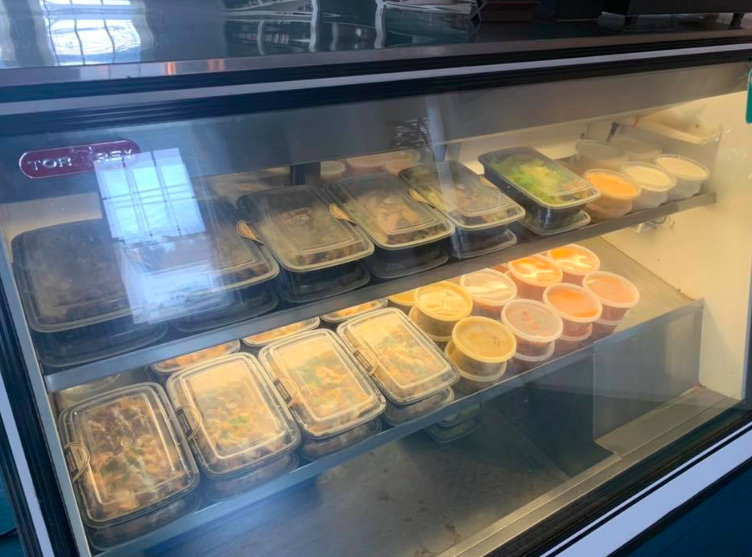
Did I necessarily want to go into the grilled cheese sandwich business? Of course not (though I do make a damned fine grilled cheese). But I’ll grow my menu as the budget allows room for new equipment purchases, instead of the other way around.
Buy the equipment you can afford, not the equipment you want.
Most of my restaurant’s to-go business is built around a massive display cooler that I bought for $500 bucks from under a tarp in some random guy’s front yard. It’s ancient, it was filthy when I bought it, and it won’t hold a steady 40 degrees in the summertime without adding blocks of ice to the interior.
But you know what? It gets the job done (albeit with a lot of care and attention, and a few white-knuckle moments when it seemed like the compressor wasn’t going to kick on).
It’s not pretty, but it works, and it’s on my short list of items to upgrade as soon as cash allows. But for that “day one” mentality I’ve been describing? It’s a perfect match.
Consider your staffing needs very carefully.
Having a staff is great. Having someone to chop your onions for you, and keep your spatulas clean? It’s a dream, and it will ratchet your production capabilities up exponentially.
But having a staff (any staff!) is outrageously expensive. As soon as you hire someone, you’ll be liable for all sorts of things, from worker’s compensation insurance, to significant tax consequences in some states. In Maine, for example, where I live, I need to pay the state 7.65% of my employee’s wages to the state, in the form of social security taxes.

That’s an additional 84 cents, for every $11 (the state’s minimum wage) I pay my employee. But the taxation doesn’t stop there. I also need to pay for Medicare, as well as worker’s compensation, as well as unemployment insurance. Suddenly my minimum wage employee is costing almost 20% more than I had planned, and that’s for a SINGLE EMPLOYEE. The potential financial drain only gets worse, as you add members to the team.
Look, I’m all for being a job creator, and for building the team that you need to get the job done. But when you’re first getting started? Run super lean, do as much as you can by yourself, and be prepared to spend long, long hours inside your restaurant, assuming many different roles. Don’t hire staff, until you can afford to.
Once the doors are open and you have daily cash coming in, start working in the background to get your credit problems sorted out.
Sooner or later, you’re going to need to be able to finance a big purchase, whether it’s due to a major piece of equipment crapping out, the need for a kitchen upgrade, or stocking retail shelves to prepare for a big holiday rush. Once cash is coming in and you have your basic needs met, start taking steps to address your credit situation, so that at some point, you can borrow the capital you need.

An app like Credit Karma can show the dings to your credit, and even provide tools to dispute certain items. Pay off the collections accounts you can afford to pay off, make arrangements for reduced payoff amounts from others, and find out when negative marks are scheduled to fall off your credit report. Open a small line of credit, if you can, using a secured credit card, to start building some positive payment histories.
In general, we don’t like to point people towards sketchy sub-prime lenders, many of whom will introduce themselves to you shortly after you open. But once cash is coming in regularly, you have some other options, including merchant cash advances, which are repaid from your daily credit card transactions, usually with no credit check.
Many payment processors are baking this option into their services; Square, for example, offers loans ranging from $500 to $100,000, once you have accumulated $10k in credit card transactions in a calendar year.
I recently took an $1,100 loan from Square Capital, which is being repaid at the rate of between $10 and $50 per day, automatically. I like this method because, unlike a traditional loan with fixed payments, I pay more on my busier days, and less on my slower days.
Most merchant cash advances don’t report to the credit bureaus, so you won’t see a boost to your score, but they do provide working capital for businesses with few other options. After a few months (or possibly years) of keeping an eye on your credit and showing steady cashflow, you’ll be amazed at the new financing opportunities that present themselves.
I hope this guide inspires folks in a similar situation to me. You can make your dream of owning a restaurant without lots of money or sterling credit score. If you’ve got questions, I’d be to answer questions in the comments below.
Related Reading: Cooking is My Passion. Should I Start a Restaurant?
